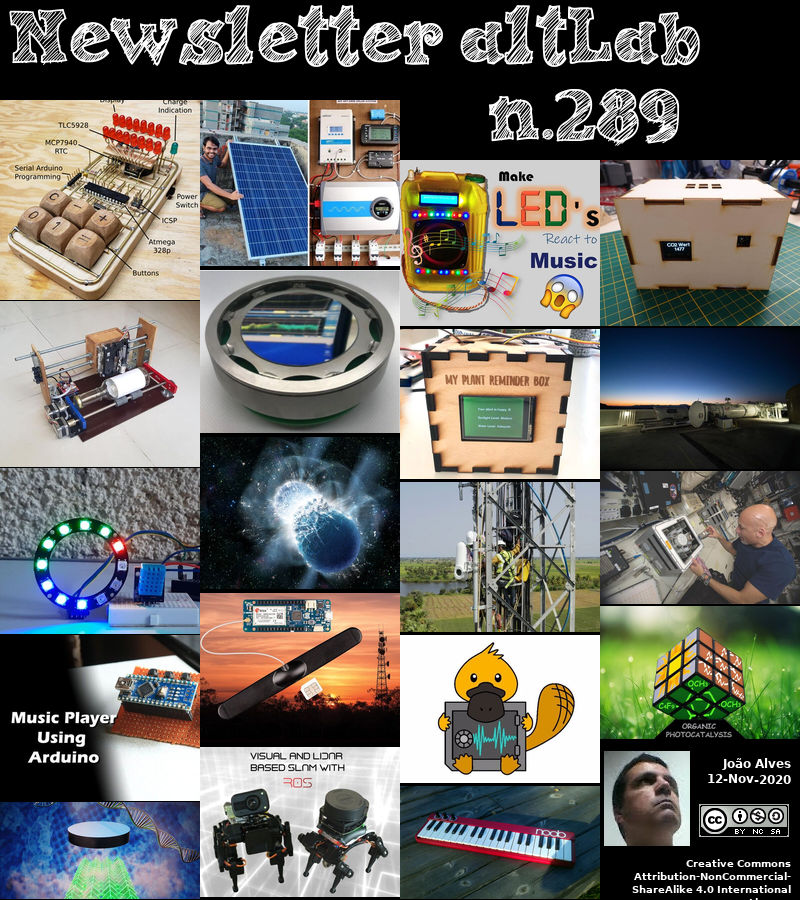2020-11-12 - Nº 289
Editorial
Esta é a Newsletter Nº 289 que se apresenta com o mesmo formato que as anteriores. Se gostar da Newsletter partilhe-a!
Todas as Newsletters encontram-se indexadas no link.
Esta Newsletter tem os seguintes tópicos:
Faz hoje anos que nascia, em 1746, o matemático e inventor francês Jacques Charles. Quando Benjamin Franklin visitou a França em 1779, Charles foi inspirado a estudar física. Ele tornou-se um orador eloquente para audiências não científicas. As suas palestras e demonstrações atraíram clientes notáveis e ajudaram a popularizar a teoria da electricidade de Franklin e outros novos conceitos científicos. Com Anne-Jean e Nicolas Robert, ele fez várias subidas de balão, e foi o primeiro a usar hidrogénio para a encher balões (1783). Charles inventou a maioria dos equipamentos que ainda são usados nos balões de hoje. Por volta de 1787 ele desenvolveu a lei de Charles sobre a expansão térmica de gases que, para um gás em pressão constante, o seu volume é directamente proporcional à sua temperatura absoluta.
Faz também hoje anos que nascia, em 1842, o cientista físico inglês John William Strutt, 3rd Baron Rayleigh. Ele fez descobertas fundamentais nos campos da acústica e óptica que são fundamentais para a teoria da propagação de ondas em fluidos. Ele recebeu o Prémio Nobel de Física em 1904 pelas suas investigações sobre as densidades dos gases mais importantes e o isolamento bem sucedido de árgon, um gás atmosférico inerte.
Nesta semana que passou a Apple anunciou o chip mais poderoso que já criou e o primeiro chip projectado especificamente para o Mac. O M1 é optimizado para sistemas Mac nos quais o tamanho pequeno e a eficiência energética são extremamente importantes. Como um sistema num chip (SoC), o M1 combina inúmeras tecnologias poderosas num único chip, e possui uma arquitectura de memória unificada para melhor desempenho e eficiência dramaticamente melhorados. O M1 é o primeiro chip de computador pessoal construído usando tecnologia de 5 nm e tem no seu interior uma quantidade surpreendente de 16 mil milhões de transístores, o máximo que a Apple já colocou num chip. Ele tem o CPU core mais rápido do mundo em silício de baixa potência, o melhor desempenho de CPU por watt do mundo, os gráficos integrados mais rápidos do mundo num computador pessoal e um desempenho inovador de machine learning com o Apple Neural Engine. Como resultado, o M1 oferece desempenho de CPU até 3,5x mais rápido, desempenho de GPU até 6x mais rápido e machine learning até 15x mais rápido, tudo isto permitindo a vida útil da bateria até 2x mais longa que os Macs da geração anterior. Com seu profundo aumento de desempenho e eficiência, o M1 dá o maior salto de todos os tempos para o Mac.
Na Newsletter desta semana apresentamos diversas noticias, artigos científicos assim como projetos de maker. É apresentada a revista newelectronics de 10 de Novembro.
 João Alves ([email protected])
João Alves ([email protected])
O conteúdo da Newsletter encontra-se sob a licença  Creative Commons Attribution-NonCommercial-ShareAlike 4.0 International License.
Creative Commons Attribution-NonCommercial-ShareAlike 4.0 International License.
Novidades da Semana
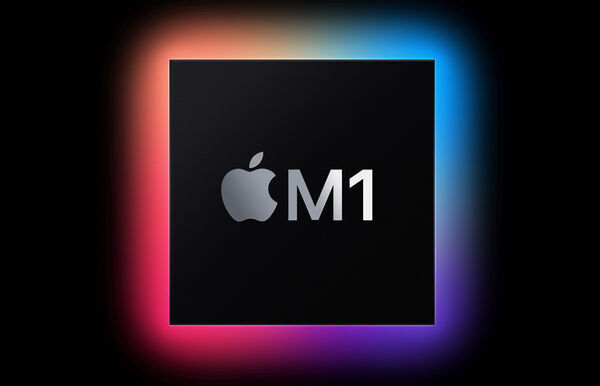
Apple unleashes M1
"With industry-leading performance, powerful features, and incredible efficiency, M1 is Apple’s first chip designed specifically for the Mac Apple today announced M1, the most powerful chip it has ever created and the first chip designed specifically for the Mac. M1 is optimized for Mac systems in which small size and power efficiency are critically important. As a system on a chip (SoC), M1 combines numerous powerful technologies into a single chip, and features a unified memory architecture for dramatically improved performance and efficiency. M1 is the first personal computer chip built using cutting-edge 5-nanometer process technology and is packed with an astounding 16 billion transistors, the most Apple has ever put into a chip. It features the world’s fastest CPU core in low-power silicon, the world’s best CPU performance per watt, the world’s fastest integrated graphics in a personal computer, and breakthrough machine learning performance with the Apple Neural Engine. As a result, M1 delivers up to 3.5x faster CPU performance, up to 6x faster GPU performance, and up to 15x faster machine learning, all while enabling battery life up to 2x longer than previous-generation Macs." [...]
Outras Notícias

Announcing .NET 5.0
"We’re excited to release .NET 5.0 today and for you to start using it. It’s a major release — including C# 9 and F# 5 — with a broad set of new features and compelling improvements. It’s already in active use by teams at Microsoft and other companies, in production and for performance testing. Those teams are showing us great results that demonstrate performance gains and/or opportunities to reduce hosting costs for their web applications. We’ve been running our own website on 5.0 since Preview 1. From what we’ve seen and heard so far, .NET 5.0 delivers significant value without much effort to upgrade." [...]

NASA's Perseverance Rover Is 100 Days Out
"A mere 100 days and 166 million miles (268 million kilometers) separate NASA's Mars 2020 Perseverance rover mission and the Red Planet's Jezero Crater. Landing will occur on Feb. 18, 2021, at 12:43 p.m. PST (3:43 p.m. EST), with confirmation being received back at NASA's Jet Propulsion Laboratory in Southern California about 11 1/2 minutes later. The six-wheeled Mars car is tasked with prowling the crater - believed to be the site of a Martian lake billions of years ago - to search for signs of ancient microbial life, collect and cache Martian rock and regolith (broken rock and dust), and pave the way for human exploration of the Red Planet. "While we call the six-and-a-half-month trip from Earth to Mars 'cruise,' I assure you there is not much croquet going on at the lido deck," said Project Manager John McNamee of JPL. "Between checking out the spacecraft, and planning and simulating our landing and surface operations, the entire team is on the clock, working toward our exploration of Jezero Crater." On Nov. 9, the mission team confirmed that the propulsion subsystem of the descent stage, which will help lower the rover onto Mars, is in good working order." [...]
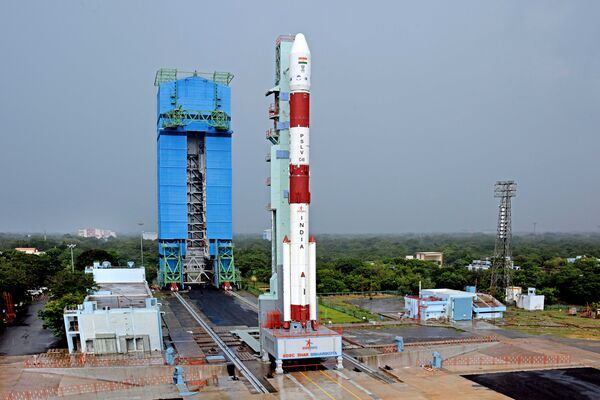
PSLV successfully launches EOS-01 and nine customer satellite from Sriharikota
"India’s Polar Satellite Launch Vehicle, in its fifty first flight (PSLV-C49), successfully launched EOS-01 along with nine international customer satellites from Satish Dhawan Space Centre (SDSC) SHAR, Sriharikota on November 07, 2020. PSLV-C49 is the 2nd flight of PSLV in 'DL' configuration (with 2 solid strap-on motors). PSLV-C49 lifted-off at 1511 Hrs (IST) from the First Launch Pad of SDSC SHAR, Sriharikota . After 15 minutes and 20 seconds, EOS-01 was successfully injected into its orbit. Subsequently, nine commercial satellites were injected into their intended orbits. After separation, the two solar arrays of EOS-01 were deployed automatically and the ISRO Telemetry Tracking and Command Network at Bengaluru assumed control of the satellite." [...]

First Passengers Travel Safely on a Hyperloop
"Transportation history was made today in the Nevada desert, where Virgin Hyperloop tested human travel in a hyperloop pod for the first time. “For the past few years, the Virgin Hyperloop team has been working on turning its ground breaking technology into reality,” said Sir Richard Branson, Founder of the Virgin Group. “With today’s successful test, we have shown that this spirit of innovation will in fact change the way people everywhere live, work, and travel in the years to come.” Josh Giegel, Co-Founder and Chief Technology Officer, and Sara Luchian, Director of Passenger Experience, were the first people in the world to ride on this new form of transportation. The test took place at Virgin Hyperloop’s 500 meter DevLoop test site in Las Vegas, where the company has previously run over 400 un-occupied tests. “When we started in a garage over 6 years ago, the goal was simple – to transform the way people move,” said Josh Giegel, Co-Founder and Chief Technology Officer of Virgin Hyperloop. “Today, we took one giant leap toward that ultimate dream, not only for me, but for all of us who are looking towards a moonshot right here on Earth.” The occupants made their maiden voyage on the newly-unveiled XP-2 vehicle, designed by BIG – Bjarke Ingels Group and Kilo Design, which was custom-built with occupant safety and comfort in mind." [...]

Taara - Expanding global access to fast, affordable internet with beams of light
"Increasing access to the internet will require affordable, reliable, and scalable infrastructure. Global internet traffic is projected to grow 24% annually. Fiber-optic cable can support this growth in demand, but rolling out an extensive fiber network often means deployment complications. Planning and digging trenches to lay lines can be time-consuming and costly, and tough terrain can pose physical challenges that make expansion nearly impossible. Because of the difficulties laying fiber in some places, there’s a significant divide in mobile internet speeds between the countries with the fastest internet and those with the slowest. There is a 7X difference in mobile internet speeds between countries with the fastest and slowest internet Source: Opensignal A potential solution to this problem arose during work on Project Loon." [...]
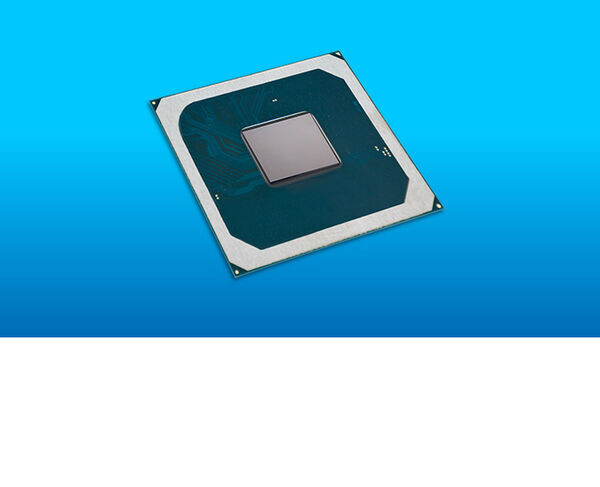
Intel Executing toward XPU Vision with oneAPI and Intel Server GPU
"Intel today announced key milestones in its multiyear journey to deliver a mix of architectures with a unified software experience. The company announced the gold release of Intel® oneAPI toolkits coming in December, and new capabilities in its software stack as part of the Intel’s combined hardware and software design approach. Intel also debuted its first discrete graphics processing unit (GPU) for the data center, Intel® Server GPU, based on the Xe-LP microarchitecture and designed specifically for high-density, low-latency Android cloud gaming and media streaming. “Today is a key moment in our ambitious oneAPI and XPU journey. With the gold release of our oneAPI toolkits, we have extended the developer experience from familiar CPU programming libraries and tools to include our vector-matrix-spatial architectures. We are also launching our first data center GPU based on Xe-LP microarchitecture focused on the fast-growing cloud gaming and media streaming segments.” –Raja Koduri, Intel senior vice president, chief architect and general manager of Architecture, Graphics and Software Why It Matters: As the world moves into an era of billions of intelligent devices and an exponential growth of data, CPUs alone require a shift in focus to a mix of architectures across CPUs, GPUs, FPGAs and other accelerators." [...]

Samsung Researchers Open a New Chapter for Holographic Displays
"Holograms have been wowing us ever since they were first invented in 1947. The incredible thing about holograms is that they allow us to experience the real and virtual worlds at the same time. Though they’ve long been regarded as the most perfect way to represent objects with light, their widespread commercialization has thus far been hindered by technological limitations. As part of an effort to find ways to apply holograms to a wider range of fields, researchers from the Samsung Advanced Institute of Technology (SAIT), which has long recognized holograms’ limitless potential, began to study the development of holographic displays.1 After eight years of trials, the team published a thesis on slim-panel holographic video displays in the world-renowned scientific journal, Nature Communications. What does SAIT’s thesis mean for the study and development of holograms, and how could holograms eventually be applied to our daily lives? To answer those questions and more, Samsung Newsroom interviewed Master Hong-Seok Lee of the Samsung Advanced Institute of Technology, along with Principal Researcher Jungkwuen An and Staff Researcher Kanghee Won." [...]

AMD Unveils AMD Ryzen™ Embedded V2000 Processors with Enhanced Performance and Power Efficiency
"AMD Ryzen Embedded V2000 Series processors deliver double the cores1, up to 2x the performance-per-watt2 and an estimated 15 percent IPC uplift3 over the previous generation AMD today launched a new product in its high-performance Embedded processor family, the AMD Ryzen™ Embedded V2000 Series processor. Built on the innovative 7nm process technology, ‘Zen 2’ cores and high-performance AMD Radeon™ graphics, the AMD Ryzen Embedded V2000 Series provides a new class of performance with 7nm technology, incredible power efficiency and continues to deliver enterprise-class security features for embedded customers. The AMD Embedded Ryzen V2000 family is designed for embedded applications such as Thin Client, MiniPC and Edge systems. Equipped with up to eight CPU cores and seven GPU compute units, a single AMD Ryzen Embedded V2000 Series processor provides 2x4 the multi-threaded performance-per-watt, up to 30 percent5 better single-thread CPU performance and up to 40 percent6 better graphics performance over the previous generation. For customers and applications that need high-performance display capabilities, the Ryzen Embedded V2000 series can power up to four independent displays in 4K resolution. “AMD is continuing to deliver high performance embedded processors for our customers with the new Ryzen Embedded V2000 series,” said Rajneesh Gaur, corporate vice president and general manager, Embedded Business, AMD." [...]

Microchip Extends Leadership in Data Center Connectivity with Industry’s Lowest Latency PCI Express 5.0 and CXL 2.0 Retimers
"As the high-performance computing demands of data center workloads increase, new ultra-low-latency signal transmission technology is required to advance the performance in Artificial Intelligence (AI), Machine Learning (ML), Advanced Driver Assisted Systems (ADAS) and other computational workload applications. To address this need, Microchip Technology Inc. (Nasdaq: MCHP) announced today the XpressConnect™ family of low-latency PCI Express® (PCIe®) 5.0 and Compute Express Link™ (CXLTM) 1.1/2.0 retimers. XpressConnect retimers triple the reach of PCIe Gen 5 electrical signals, which enables data center equipment providers to harness the next generational advancement in compute IO performance while providing the required flexibility and connectivity for advanced hardware architectures. XpressConnect retimers deliver ultra-low-latency signal transmission that enables the most demanding computational workloads in AI, ML, communication systems and high-performance computing applications. “With increasing storage, compute and memory bandwidth demands, hyperscale data center, server and storage providers have continued to look to Microchip for leading compute, storage and memory connectivity solutions,” said Andrew Dieckmann, associate vice president of marketing and applications engineering for Microchip’s data center solutions business unit. “Microchip is uniquely positioned to deliver seamless interoperability with XpressConnect retimers given our extensive portfolio of PCIe SwitchtecTM and Flashtec® products and our close relationships with industry partners, providing lower engineering costs and faster time to market for our customers.” The XpressConnect family delivers extended reach at >80% lower latency than the PCIe specification, with a pin-to-pin latency of <10 nanoseconds." [...]
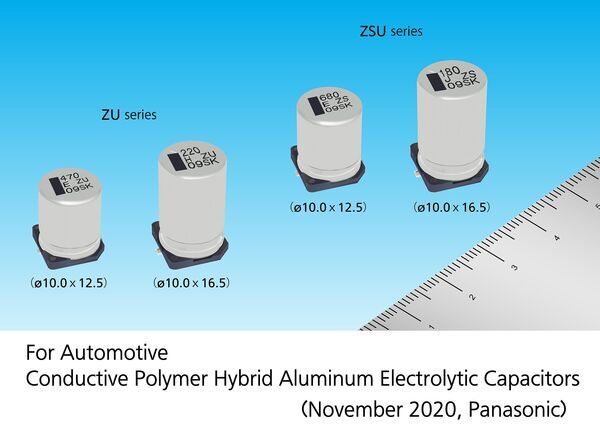
Panasonic Commercializes Conductive Polymer Hybrid Aluminum Electrolytic Capacitors with the Industry's Largest Ripple Current
"Panasonic Corporation announced today that its Industrial Solutions Company has commercialized new conductive polymer hybrid aluminum electrolytic capacitors, the large-current ZU series, and large-capacitance ZSU series for use in automotive ECUs (electronic control units) [1]. Mass production will start in December 2020. The new ZU series has achieved ripple current*1 of over 1.4 times as large as the conventional ZS series (ϕ10 x 12.5 mm and ϕ10 x 16.5 mm), supporting increases in circuit load current due to high performance automotive ECUs and contributing to smaller automotive ECUs through a reduction in the number of required capacitors. *1: As conductive polymer hybrid aluminum electrolytic capacitors of the same size as of November 10, 2020 (according to research by Panasonic) Conductive polymer hybrid aluminum electrolytic capacitors feature low resistance and high reliability with a fusion of conductive polymer and electrolyte and are used in a wide range of applications, from control circuits in automotive engine ECUs, BMSs (battery management systems) [2], to motor drive circuits in 48 V system ISGs (integrated starter generators) [3], electric pumps, radiator fans, and further to ADAS applications (such as cameras, sensors, and control circuits). The progress in electrification and self-driving technology has led to the higher performance of automotive ECUs, which have increased circuit load currents. The progress has also led to the implementation of redundant design [4] aiming to improve safety and reliability, resulting in use of increased number of automotive ECUs by mounting two sets of circuits in the same ECU, for example." [...]

NXP Tackles Cost and Complexity of Automotive Software Development with New S32K3 MCUs
"NXP Semiconductors N.V. (NASDAQ: NXPI) today announced the S32K3 microcontroller (MCU) family, the newest addition to its S32K product line. The S32K1 family, released in 2017, marked an important turning point in addressing software’s central role in automotive development. The new S32K3 family, designed for automotive body electronics, battery management and emerging zone controllers, continues to simplify software development with an enhanced package that spans security, functional safety and low-level drivers. The S32K3 expands NXP’s S32 automotive platform from gateway and domain control into zone control and edge nodes. Plus, it enables software reuse among multiple applications to reduce the complexity of vehicle software development and ease the burden for Tier 1s and carmakers. “Software development is one of the central challenges in modern vehicle development and the S32K3 MCU family is designed to help customers meet it,” said Ed Sarrat, director of product management, Automotive Processing at NXP." [...]
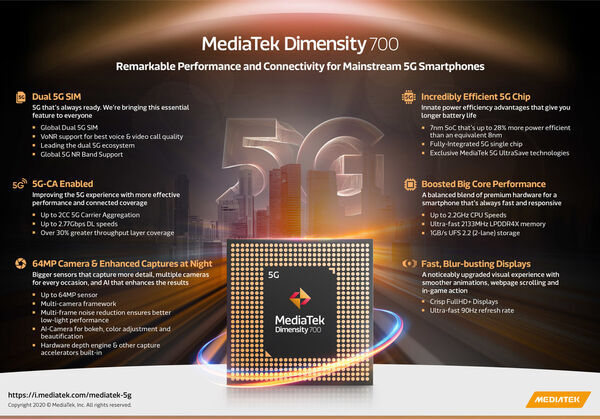
MediaTek Unveils Its Newest 5G Chipset, Dimensity 700, For Mass Market 5G Smartphones
"MediaTek today unveiled its new Dimensity 700 5G smartphone chipset, a 7nm SoC designed to bring advanced 5G capabilities and experiences to the mass market. The addition of the Dimensity 700 to MediaTek’s Dimensity family of 5G chips gives device makers a full suite of options for 5G smartphone models – from flagship and premium to mid-range and mass market devices – making 5G more accessible for consumers everywhere. “With our expanded Dimensity portfolio we’re bringing the latest 5G capabilities to every smartphone tier so more people can enjoy 5G experiences,” said Dr. JC Hsu, Corporate VP and GM of MediaTek’s Wireless Communications Business Unit. “The Dimensity 700 has an impressive mix of 5G connectivity features, advanced camera capabilities like night shot enhancements and multiple voice assistant support, all in a super power-efficient design.” The Dimensity 700 packs advanced connectivity features including 5G Carrier Aggregation (2CC 5G-CA) and 5G dual SIM dual standby (DSDS), giving users access to the fastest speeds and 5G-exclusive Voice over New Radio (VoNR) services from either connection. On the processing power side, the chip integrates two Arm Cortex-A76 big cores in its octa-core CPU and operates at up to 2.2GHz. Key features of Dimensity 700 include: MediaTek 5G UltraSave: Delivers advanced power-saving technologies to improve battery life." [...]

Industry’s Smallest Quad-Output SIMO Power Management IC by Maxim Integrated Achieves 85 Percent Higher Power Density
"MAX77655 provides highest number of output channels and cuts solution size by 70 percent for ultra-portable wearables, IoT sensor nodes and health monitors The breakthrough MAX77655 single-inductor multiple output (SIMO) power management IC (PMIC) from Maxim Integrated Products, Inc. (NASDAQ: MXIM) provides the highest-density power solution for extremely compact next-generation devices. This PMIC delivers a 70 percent reduction in solution size compared to the nearest competition, with 700mA across four buck-boost channels and only one inductor required for a total solution size of 17mm2. Designers of ultra-small portable devices such as wearables, internet of things (IoT) sensor nodes and health monitors are looking to increase computing capability, memory and sensor resources in their feature-rich devices – all in an ever more compact form factor. The MAX77655 SIMO PMIC addresses this space-constraint issue by sharing one inductor among all four supplies in a single 3.95mm2 IC. In addition, ultra-high efficiency helps to extend battery life by providing 90 percent regulator efficiency during moderate to heavy load conditions, while consuming only 6.9µA of quiescent current during light load conditions. For additional power management platforms regarding systems requiring less than 500mA, Maxim Integrated also introduced two new configurable PMICs – the MAX77643 and MAX77642." [...]

STMicroelectronics Collaborates with Qualcomm Technologies on Unique Sensor Solutions for Next-Gen Mobile, Connected PC, IoT, and Wearable Applications
"STMicroelectronics, a global semiconductor leader serving customers across the spectrum of electronics applications is extending its leadership in sensor technologies by developing innovative software solutions using technology from Qualcomm Technologies, Inc. through the Qualcomm® Platform Solutions Ecosystem program. In this program, ST is contributing pre-validated software to OEMs for its MEMS and other sensing devices to deliver advanced features to the next generation of smartphones, connected PCs, IoT, and wearables. Most recently, Qualcomm Technologies has pre-selected ST’s latest high-accuracy, low-power, motion-tracking IC with intelligent sensor software, along with ST’s most accurate pressure sensor, for use in its latest advanced 5G mobile reference platforms. The motion-tracking sensor, the new iNEMO LSM6DST is a 6-axis Inertial Measurement Unit (IMU) that integrates a 3-axis digital accelerometer and a 3-axis gyroscope into a compact and efficient System-in-Package. With the industry’s lowest power consumption – 0.55mA in high-performance mode and as little as 4uA in Accelerometer-only mode — the LSM6DST enables always-on high-accuracy motion tracking with minimal impact on power consumption. In concert with ST’s low-noise (0.65Pa), high-accuracy (±0.5hPa), and industry-first I3C-enabled LPS22HH pressure sensor, the pair provides highly accurate location tracking while meeting the most restrictive power budgets." [...]
Ciência e Tecnologia

Researchers 3D-print biomedical parts with supersonic speed
"Forget glue, screws, heat or other traditional bonding methods. A Cornell-led collaboration has developed a 3D printing technique that creates cellular metallic materials by smashing together powder particles at supersonic speed. This form of technology, known as “cold spray,” results in mechanically robust, porous structures that are 40% stronger than similar materials made with conventional manufacturing processes. The structures’ small size and porosity make them particularly well-suited for building biomedical components, like replacement joints. The team’s paper, “Solid-State Additive Manufacturing of Porous Ti-6Al-4V by Supersonic Impact,” published Nov. 9 in Applied Materials Today. The paper’s lead author is Atieh Moridi, assistant professor in the Sibley School of Mechanical and Aerospace Engineering." [...]

Transmitting Data From Space to Earth With Laser Filaments
"Pulsed light clears a path through the atmosphere for second beam of information Could light be used to transmit information between satellites and Earth? Atmospheric water vapor scatters and absorbs light energy, but overcome that obstacle, and light will carry far more information and move it faster than the radio waves we currently rely on. A new research project, supported by the National Geospatial-Intelligence Agency, proposes to use the properties of light itself to punch a pathway for data through the clouds. “My work is understanding the constituents of light and manipulating them to interact with matter. In recent years, we’ve seen more advances in using light for biomedical imaging and quantum computing, but the fundamental properties of manipulating light are the same, and light can be made to do this work,” said Moussa N’Gom, an assistant professor of physics at Rensselaer Polytechnic Institute. Using light to move data wirelessly, known as free space optical communication, is common in applications that need only travel a short distance, like infrared remote control units." [...]

UChicago scientists uncover secrets to designing brain-like devices
"Even with decades of unprecedented development in computational power, the human brain still holds many advantages over modern computing technologies. Our brains are extremely efficient for many cognitive tasks and do not separate memory and computing, unlike standard computer chips. In the last decade, the new paradigm of neuromorphic computing has emerged, inspired by neural networks of the brain and based on energy-efficient hardware for information processing. To create devices that mimic what occurs in our brains’ neurons and synapses, researchers need to overcome a fundamental molecular engineering challenge: how to design devices that exhibit controllable and energy-efficient transition between different resistive states triggered by incoming stimuli. In a recent study, scientists at the Pritzker School of Molecular Engineering (PME) at the University of Chicago were able to predict design rules for such devices. Published November 10 in npj Computational Materials, the study predicted new ways of engineering and triggering changes in electronic properties in several classes of transition metal oxides, which could be used to form the basis of neuromorphic computing architectures." [...]

Black hole or no black hole: On the outcome of neutron star collisions
" A new study lead by GSI scientists and international colleagues investigates black-hole formation in neutron star mergers. Computer simulations show that the properties of dense nuclear matter play a crucial role, which directly links the astrophysical merger event to heavy-ion collision experiments at GSI and FAIR. These properties will be studied more precisely at the future FAIR facility. The results have now been published in Physical Review Letters. With the award of the 2020 Nobel Prize in Physics for the theoretical description of black holes and for the discovery of a supermassive object at the center of our galaxy the topic currently also receives a lot of attention. But under which conditions does a black hole actually form?" [...]
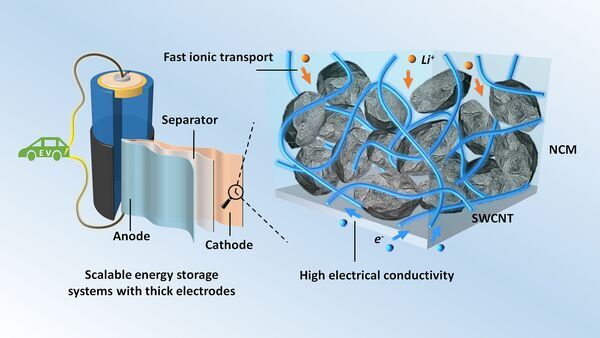
Improving High-Energy Lithium-Ion Batteries with Carbon Filler
"Lithium-ion batteries are the major rechargeable power source for many portable devices as well as electric vehicles, but their use is limited, because they do not provide high power output while simultaneously allowing reversible energy storage. Research reported in Applied Physics Reviews, by AIP Publishing, aims to offer a solution by showing how the inclusion of conductive fillers improves battery performance. The optimum battery design involves thick electrode structures. This enhances the energy density, but the design suffers from poor lithium-ion transport, a key step in the functioning of these electrodes. Various improvement techniques have been tried, including building vertically aligned channels or creating pores of the proper size to facilitate transport of the lithium ions. Another approach involves the use of fillers made of carbon that conduct electricity." [...]
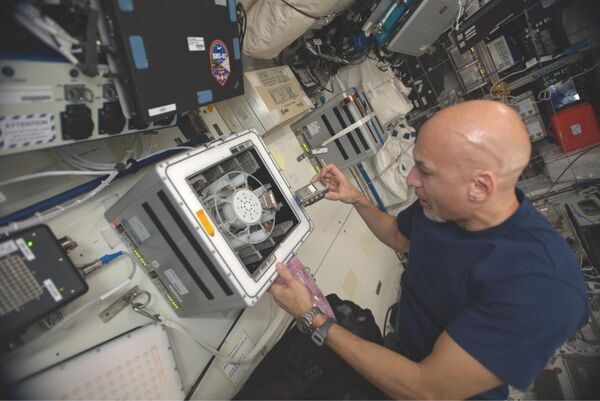
Mining rocks in orbit could aid space missions
"The first mining experiments conducted in space could pave the way for new technologies to help humans explore and establish settlements on distant worlds, a study suggests. Tests performed by astronauts on the International Space Station suggest that bacteria can extract useful materials from rocks on Mars and the Moon. The findings could aid efforts to develop ways of sourcing metals and minerals – such as iron and magnesium – essential for survival in space. Bacteria could one day be used to break rocks down into soil for growing crops, or to provide minerals for life support systems that produce air and water, researchers say. Mining kits Matchbox-sized mining devices – called biomining reactors – were developed over a 10-year period by scientists at the UK Centre for Astrobiology at the University. Eighteen of the devices were transported to the space station – which orbits the Earth at an altitude of around 250 miles – aboard a SpaceX rocket launched from Cape Canaveral in Florida, US, in July 2019." [...]

Making 3-D Nanosuperconductors with DNA
"Complex 3-D nanoscale architectures based on DNA self-assembly can conduct electricity without resistance and may provide a platform for fabricating quantum computing and sensing devices. Three-dimensional (3-D) nanostructured materials—those with complex shapes at a size scale of billionths of a meter—that can conduct electricity without resistance could be used in a range of quantum devices. For example, such 3-D superconducting nanostructures could find application in signal amplifiers to enhance the speed and accuracy of quantum computers and ultrasensitive magnetic field sensors for medical imaging and subsurface geology mapping. However, traditional fabrication tools such as lithography have been limited to 1-D and 2-D nanostructures like superconducting wires and thin films. Now, scientists from the U.S. Department of Energy’s (DOE) Brookhaven National Laboratory, Columbia University, and Bar-Ilan University in Israel have developed a platform for making 3-D superconducting nano-architectures with a prescribed organization. As reported in the Nov. 10 issue of Nature Communications, this platform is based on the self-assembly of DNA into desired 3-D shapes at the nanoscale." [...]

Electrified magnets: researchers uncover a new way to handle data
"The properties of synthesised magnets can be changed and controlled by charge currents as suggested by a study and simulations conducted by physicists at Martin Luther University Halle-Wittenberg (MLU) and Central South University in China. In the journal "Nature Communications", the team reports on how magnets and magnetic signals can be coupled more effectively and steered by electric fields. This could result in new, environmentally friendly concepts for efficient communication and data processing. Magnets are used to store large amounts of data. They can also be employed in transmitting and processing signals, for example in spintronic devices. External magnetic fields are used to modify the data or the signals." [...]

Russian Scientists Develop Perovskite Metasurfaces for Smart Glass
"Perovskite thin films will make it possible to turn normal glass into smart surfaces that can display information in AR devices and convert solar energy into electricity. The research of the group headed by ITMO scientists has been in Laser & Photonics Reviews. AR technologies have been developing very rapidly in recent years. Developers from different countries create concepts and working prototypes of smart glasses, smart windows, and smart windscreens that can provide users with additional information of what’s happening around them. Hence, the demand for materials to support such solutions is actively growing. They have to be transparent so that users can see through them." [...]
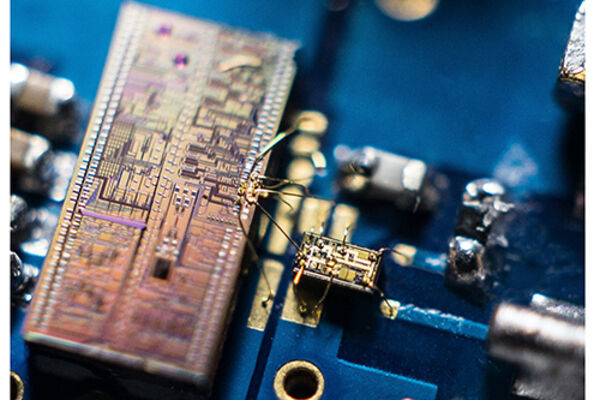
Combining electronic and photonic chips enables new record in super-fast quantum light detection
"Bristol researchers have developed a tiny device that paves the way for higher performance quantum computers and quantum communications, making them significantly faster than the current state-of-the-art. Researchers from the University of Bristol’s Quantum Engineering Technology Labs (QET Labs) and Université Côte d‘Azur have made a new miniaturized light detector to measure quantum features of light in more detail than ever before. The device, made from two silicon chips working together, was used to measure the unique properties of “squeezed” quantum light at record high speeds. Harnessing unique properties of quantum physics promises novel routes to outperform the current state-of-the-art in computing, communication and measurement. Silicon photonics – where light is used as the carrier of information in silicon micro-chips – is an exciting avenue towards these next-generation technologies. “Squeezed light is a quantum effect that is very useful." [...]

Researchers trap electrons to create elusive crystal
"Like restless children posing for a family portrait, electrons won’t hold still long enough to stay in any kind of fixed arrangement. Now, a Cornell-led collaboration has developed a way to stack two-dimensional semiconductors and trap electrons in a repeating pattern that forms a specific and long-hypothesized crystal. The team’s paper, “Correlated Insulating States at Fractional Fillings of Moiré Superlattices,” published Nov. 11 in Nature. The paper’s lead author is postdoctoral researcher Yang Xu. The project grew out of the shared lab of Kin Fai Mak, associate professor of physics in the College of Arts and Sciences, and Jie Shan, professor of applied and engineering physics in the College of Engineering, the paper’s co-senior authors. Both researchers are members of the Kavli Institute at Cornell for Nanoscale Science; they came to Cornell through the provost’s Nanoscale Science and Microsystems Engineering (NEXT Nano) initiative." [...]

A Second Cable Fails at NSF’s Arecibo Observatory in Puerto Rico
"Engineers are reviewing the new damage and assessing how to best stabilize the facility. A main cable that supports the Arecibo Observatory broke Friday at 7:39 p.m. Puerto Rico time. Unlike the auxiliary cable that failed at the same facility on Aug. 10, this main cable did not slip out of its socket. It broke and fell onto the reflector dish below, causing additional damage to the dish and other nearby cables. Both cables were connected to the same support tower. No one was hurt, and engineers are already working to determine the best way to stabilize the structure." [...]
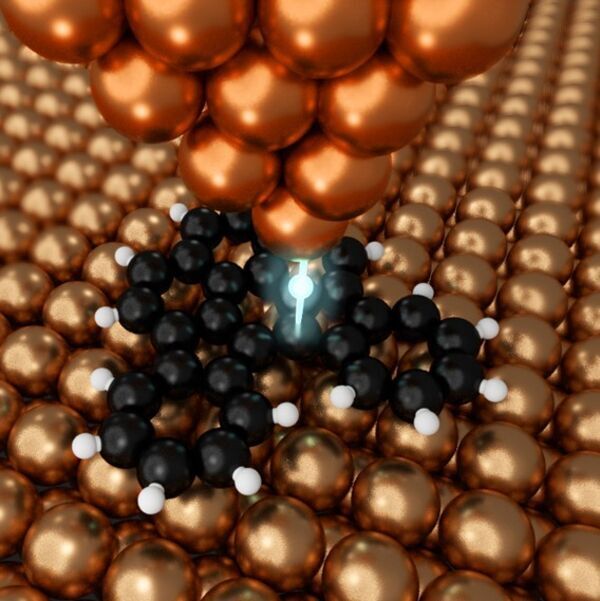
Tips for making nanographene
"A new and efficient way to create nanographene for power and display devices. Nanographene is a material that is anticipated to radically improve solar cells, fuel cells, LEDs and more. Typically the synthesis of this material has been imprecise and difficult to control. For the first time, researchers have discovered a simple way to gain precise control over the fabrication of nanographene. In doing so, they have shed light on the previously unclear chemical processes involved in nanographene production. You have probably heard of graphene, one-atom-thick sheets of carbon molecules, that are supposed to revolutionize technology." [...]
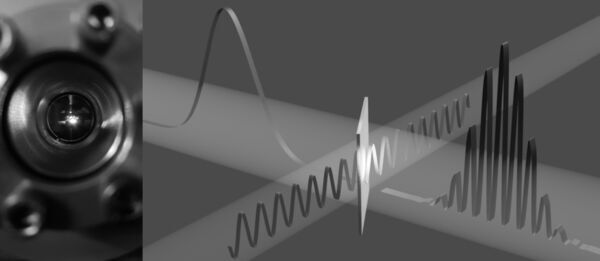
Attosecond boost for electron microscopy
"A team of physicists from the University of Konstanz and Ludwig-Maximilians-Universität München in Germany have achieved attosecond time resolution in a transmission electron microscope by combining it with a continuous-wave laser – new insights into light-matter interactions. Electron microscopes provide deep insight into the smallest details of matter and can reveal, for example, the atomic configuration of materials, the structure of proteins or the shape of virus particles. However, most materials in nature are not static and rather interact, move and reshape all the time. One of the most common phenomena is the interaction between light and matter, which is ubiquitous in plants as well as in optical components, solar cells, displays or lasers. These interactions – which are defined by electrons being moved around by the field cycles of a light wave – happen at ultrafast time scales of femtoseconds (10-15 seconds) or even attoseconds (10-18 seconds, a billionth of a billionth of a second). While ultrafast electron microscopy can provide some insight into femtosecond processes, it has not been possible, until now, to visualize the reaction dynamics of light and matter occurring at attosecond speeds." [...]
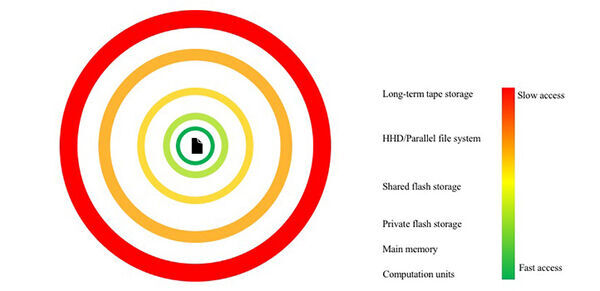
Keep the data coming
"A continuous data supply ensures data-intensive simulations can run at maximum speed. A pre-emptive memory management system developed by KAUST researchers can speed up data-intensive simulations by 2.5 times by eliminating delays due to slow data delivery. The development elegantly and transparently addresses one of the most stubborn bottlenecks in modern supercomputing—delivering data from memory fast enough to keep up with computations. “Reducing the movement of data while keeping it close to the computing hardware is one of the most daunting challenges facing computational scientists handling big data,” explains Hatem Ltaief from the research team. “This is exacerbated by the widening gap between computational speed and memory transmission capacity, and the need to store high-volume data on remote storage media.” The key challenge in processing big data is the cost and scale of storing the data in memory. The faster the memory, the more expensive it is, and the faster the data need to be moved between computing elements." [...]

3D-printed weather stations could enable more science for less money
"An inexpensive monitoring system with 3D-printed parts and low-cost sensors might not last as long as a commercial one, but it can be just as accurate, researchers found. Across the United States, weather stations made up of instruments and sensors monitor the conditions that produce our local forecasts, like air temperature, wind speed and precipitation. These systems aren’t just weather monitors, they are also potent tools for research on topics from farming to renewable energy generation. Commercial weather stations can cost thousands of dollars, limiting both their availability and thus the amount of climate data that can be collected. But the advent of 3D printing and low-cost sensors have made it possible to build a weather station for a few hundred dollars. Could these inexpensive, homegrown versions perform as well as their pricier counterparts?" [...]
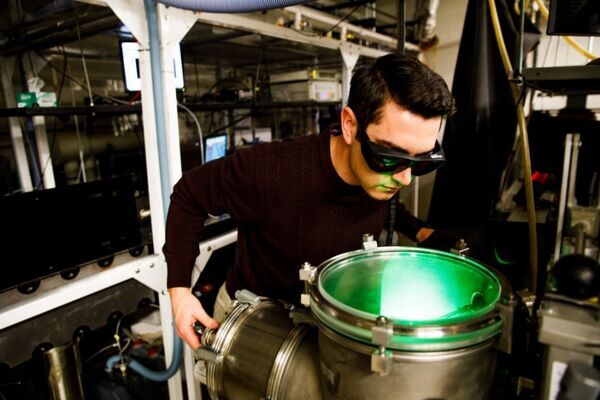
Ultrafast laser experiments pave way to better industrial catalysts
"Arizona State University's Scott Sayres and his team have recently published an ultrafast laser study on uncharged iron oxide clusters, which could ultimately lead to the development of new and less-expensive industrial catalysts. It might also contribute to a better understanding of the universe since iron oxides are observed in the emission spectra of stars. Sayres is an assistant professor in ASU’s School of Molecular Sciences and a faculty member in the Biodesign Institute’s Center for Applied Structural Discovery. Most chemical industries utilize catalysts to enhance the rate of reaction and selectivity in obtaining their desired products. For example, catalytic converters in the exhausts of our vehicles commonly use platinum, palladium and rhodium to help break down pollutants. All three of these metals are significantly more expensive than gold, which is in turn a lot more costly than iron." [...]
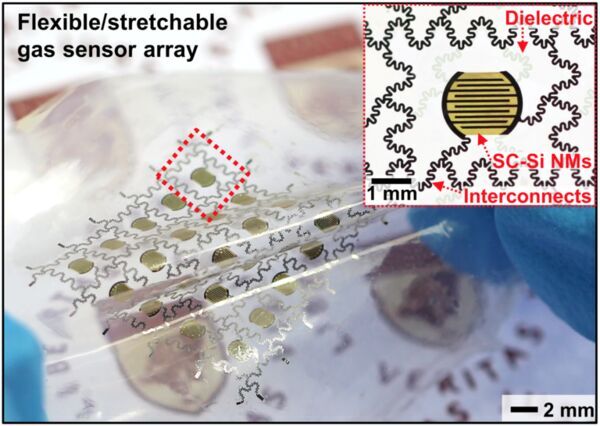
Implantable sensor could measure bodily functions -- and then safely biodegrade
"Sensors need to be flexible, stretchable, biodegradable, safe and stable for use in the body. Sensors that monitor a patient’s condition during and after medical procedures can be expensive, uncomfortable and even dangerous. Now, an international team of researchers has designed a highly sensitive flexible gas sensor that can be implanted in the body — and, after it’s no longer needed, safely biodegrade into materials that are absorbed by the body. In a study, the researchers reported they designed a flexible and implantable sensor that can monitor various forms of nitric oxide (NO) and nitrogen dioxide (NO2) gas in the body. Monitoring these types of gases is important because they can play either a beneficial or, sometimes, harmful role in human health, according to Huanyu “Larry” Cheng, Dorothy Quiggle Career Development Professor in the Department of Engineering Science and Mechanics and an affiliate of the Institute for Computational and Data Sciences. Nitric oxide, for example, which is produced naturally in the human body, plays an important role in health because it relaxes or widens blood vessels to enhance blood flow, allowing oxygen and nutrients to circulate through the body." [...]

Smaller than Ever—Exploring the Unusual Properties of Quantum-sized Materials
"Scientists at Tokyo Institute of Technology (Tokyo Tech) synthesize sub-nanometer particles with precisely controlled proportions of indium and tin using specific macromolecular templates called dendrimers. Through a screening process spanning different metallic ratios, they discovered unusual electronic states and optical properties originating from size-miniaturization and elemental-hybridization. Their approach could be a first step in the development of sub-nanoparticles with unique functionalities and characteristics for electronic, magnetic, and catalytic applications. The development of functional nanomaterials has been a major landmark in the history of materials science. Nanoparticles with diameters ranging from 5 to 500 nm have unprecedented properties, such as high catalytic activity, compared to their bulk material counterparts. Moreover, as particles become smaller, exotic quantum phenomena become more prominent." [...]
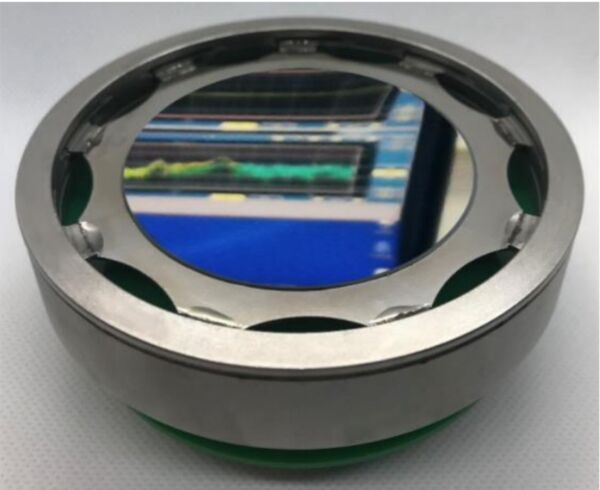
Shape-shifting mirror
"This bendable space mirror can have its shape shifted to compensate for manufacturing or alignment errors within orbital telescopes or temperature-driven distortions. Very large space telescopes are necessary to increase image resolution and sensitivity, whether for deep space exoplanet detection or sharpened views of the terrestrial environment. But large instruments will be harder to align and more sensitive to the absence of gravity and the environmental extremes of space. Being able to actively correct a telescope mirror’s shape offers a way forward. Piezoelectric actuators placed under this prototype 50 mm mirror serve to deform its shape. The resulting change in shape is invisible to the naked eye, around a thousandth of a millimetre or less, but it will still enable previously impossible missions to take place." [...]

Power-free system harnesses evaporation to keep items cool
"Inspired by camel fur, a new two-layered material could provide extended cooling to preserve the freshness of perishable goods. Camels have evolved a seemingly counterintuitive approach to keeping cool while conserving water in a scorching desert environment: They have a thick coat of insulating fur. Applying essentially the same approach, researchers at MIT have now developed a system that could help keep things like pharmaceuticals or fresh produce cool in hot environments, without the need for a power supply. Most people wouldn’t think of wearing a camel-hair coat on a hot summer’s day, but in fact many desert-dwelling people do tend to wear heavy outer garments, for essentially the same reason. It turns out that a camel’s coat, or a person’s clothing, can help to reduce loss of moisture while at the same time allowing enough sweat evaporation to provide a cooling effect. Tests have showed that a shaved camel loses 50 percent more moisture than an unshaved one, under identical conditions, the researchers say." [...]

A new candidate material for Quantum Spin Liquids
"Using a unique material, EPFL scientists have been able to design and study an unusual state of matter, the Quantum Spin Liquid. The work has significant implications for future technologies, from quantum computing to superconductivity and spintronics. In 1973, physicist and later Nobel laureate Philip W. Anderson proposed a bizarre state of matter: the quantum spin liquid (QSL). Unlike the everyday liquids we know, the QSL actually has to do with magnetism – and magnetism has to do with spin. Disordered electron spin produces QSLs What makes a magnet? It was a long-lasting mystery, but today we finally know that magnetism arises from a peculiar property of sub-atomic particles, like electrons." [...]

Pushing the envelope with fusion magnets
"MIT Energy Fellow David Fischer irradiates high-temperature superconducting tape to test its resilience and prepare for the first pilot fusion plant. “At the age of between 12 and 15 I was drawing; I was making plans of fusion devices.” David Fischer remembers growing up in Vienna, Austria, imagining how best to cool the furnace used to contain the hot soup of ions known as plasma in a fusion device called a tokamak. With plasma hotter than the core of the sun being generated in a donut-shaped vacuum chamber just a meter away from these magnets, what temperature ranges might be possible with different coolants, he wondered. “I was drawing these plans and showing them to my father,” he recalls. “Then somehow I forgot about this fusion idea.” Now starting his second year at the MIT Plasma Science and Fusion Center (PSFC) as a postdoc and a new Eni-sponsored MIT Energy Fellow, Fischer has clearly reconnected with the “fusion idea.” And his research revolves around the concepts that so engaged him as a youth. Fischer’s early designs explored a popular approach to generating carbon-free, sustainable fusion energy known as “magnetic confinement.” Since plasma responds to magnetic fields, the tokamak is designed with magnets to keep the fusing atoms inside the vessel and away from the metal walls, where they would cause damage." [...]

Seawalls’ marine biodiversity enhanced by eco-engineered tiles: CityU study
"A research team of marine ecologists led by Professor Kenneth Leung Mei-yee, Director of the State Key Laboratory of Marine Pollution at City University of Hong Kong (CityU) and Chair Professor of Environmental Toxicology and Chemistry in the Department of Chemistry, has generated promising results for enhancing marine biodiversity on seawalls in the western waters of Hong Kong via eco-engineered tiles. The research team attached experimental tiles to vertical seawalls in Sham Shui Kok on Lantau Island and Lok On Pai in Tuen Mun. Applying the principles of eco-engineering, eco-friendly tiles were created with crevices and grooves that can serve as microhabitats for marine organisms while the shade can lower the surface temperature during low tides and in summer, thus overcoming thermal stresses caused by conventional seawalls. Additionally, bivalve seeding was applied by affixing half of the tiles with the local rock oyster Saccostrea cuccullata as a more natural way to increase habitat complexity. The experiment produced positive results as the experimental tiles with crevices 2.5 cm or 5 cm deep had up to twice the number of species present in the shaded crevices than on the exposed ledges. When compared with flat tiles, the tiles with crevices could harbour more marine species (with an increase of 19 - 51%) and higher abundance of organisms (with an increase of 59 - 416%)." [...]
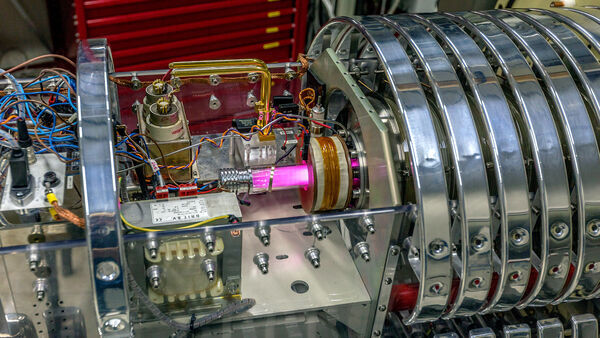
Physicists Pin Down Nuclear Reaction From Moments After the Big Bang
"The newly-measured rate of a key nuclear fusion process from the Big Bang matches the picture of the universe 380,000 years later. In a secluded laboratory buried under a mountain in Italy, physicists have re-created a nuclear reaction that happened between two and three minutes after the Big Bang. Their measurement of the reaction rate, published today in Nature, nails down the most uncertain factor in a sequence of steps known as Big Bang nucleosynthesis that forged the universe’s first atomic nuclei. Researchers are “over the moon” about the result, according to Ryan Cooke, an astrophysicist at Durham University in the United Kingdom who wasn’t involved in the work. “There’ll be a lot of people who are interested from particle physics, nuclear physics, cosmology and astronomy,” he said. The reaction involves deuterium, a form of hydrogen consisting of one proton and one neutron that fused within the cosmos’s first three minutes." [...]
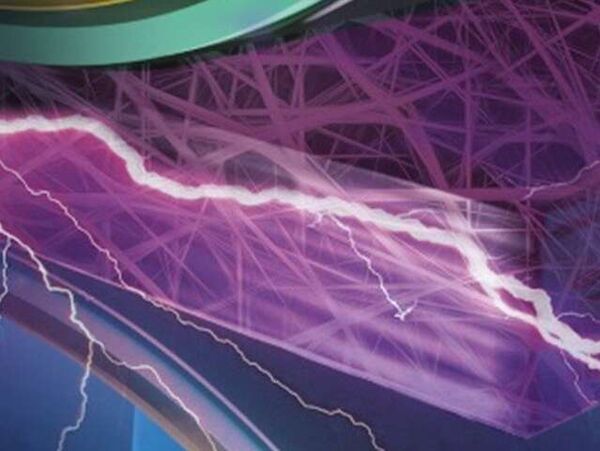
Nylon finally takes its place as a piezoelectric textile
"Nylon might seem the obvious go-to material for electronic textiles—not only is there an established textiles industry based on nylon, but it conveniently has a crystalline phase that is piezoelectric—tap it and you get a build-up of charge perfect for pressure sensing and harvesting energy from ambient motion. Unfortunately, forming nylon into fibers while getting it to take on the crystal structure that has a piezoelectric response is not straightforward. "This has been a challenge for almost half a century," explains Kamal Asadi, a researcher at the Max-Planck Institute for Polymer Research, Germany, and professor at the University of Bath, U.K. In a recent Advanced Functional Materials report, he and his collaborators describe how they have now finally overcome this. The piezoelectric phase of nylon holds appeal not just for electronic textiles but all kinds of electronic devices, particularly where there is demand for something less brittle than the conventional piezoelectric ceramics. However, for decades, the only way to produce nylon with the crystalline phase that has a strong piezoelectric response has been to melt it, rapidly cool it and then stretch it so that it sets into a smectic δ' phase." [...]
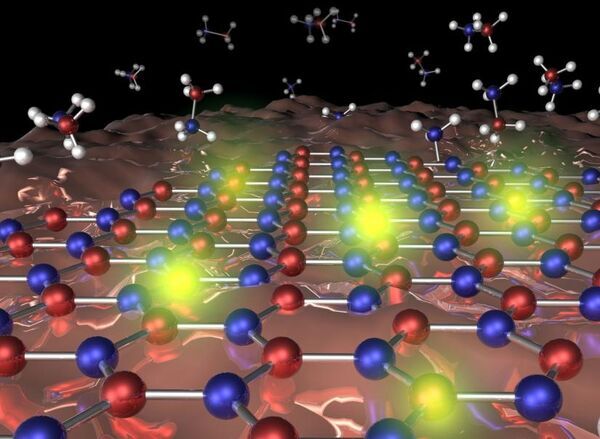
Devil in the defect detail of quantum emissions unravelled
"Emerging quantum technologies require a means to transmit quantum information effectively requiring new ways to reliably encode, transmit and detect quantum properties on individual particles of light, or photons. An international collaboration, led by the University of Technology Sydney, investigating the chemical structure of crystal imperfections, or defects, in the nanomaterial hexagonal boron nitride (hBN) have definitively linked the defect structure to carbon impurities introduced into the hBN lattice. The discovery enables a better understanding of the properties of these quantum light sources that could help overcome a barrier to their reliable fabrication. Generating Quantum Light In new research published in Nature Materials, an international multidisciplinary collaboration led by the University of Technology Sydney (UTS), has uncovered the chemical structure behind defects in white graphene (hexagonal boron nitride, hBN), a two dimensional nanomaterial that shows great promise as a platform for generating quantum light. The defects, or crystal imperfections, can act as single photon sources and an understanding of their chemical structure is critical to being able to fabricate them in a controlled way. “hBN single photon emitters display outstanding optical properties, among the best from any solid state material system, however, to make practical use of them we need to understand the nature of the defect and we have finally started to unravel this riddle,” says UTS PhD candidate Noah Mendelson and first author of the study." [...]

The importance of good neighbours in catalysis
"Are you affected by your neighbours? So are nanoparticles in catalysts. New research from Chalmers, published in the journals Science Advances and Nature Communications, reveals how the nearest neighbours determine how well nanoparticles work in a catalyst. “The long-term goal of the research is to be able to identify ‘super-particles’, to contribute to more efficient catalysts in the future. To utilise the resources better than today, we also want as many particles as possible to be actively participating in the catalytic reaction at the same time,” says research leader Christoph Langhammer at the Department of Physics at Chalmers University of Technology. Imagine a large group of neighbours gathered together to clean a communal courtyard. They set about their work, each contributing to the group effort." [...]

A Step Towards New Electronics: Scientists Manipulate Quantum Dots' Properties
"Scientists at the National Research Nuclear University MEPhI have been the first to demonstrate an increase in quantum dots’ intensity and emission rate. According to the authors of the study, the development can help solve one of the key problems in creating a quantum computer and elevate biomedical monitoring to a new level. The research results were published in the highly rated Optics Express journal. (link is external) Quantum dots are low-dimensional fluorescent nanostructures, which offer promise in the field of light-matter interaction. They are capable of absorbing a wide range of light, and emitting light in a narrow range of wavelengths, which depends on the size of the nanocrystal; that is, one or another quantum dot glows with a certain colour. These properties make quantum dots almost perfect for the ultrasensitive multi-color registration of biological objects, as well as for medical diagnostics." [...]

No matter the size of a nuclear party, some protons and neutrons will always pair up and dance
"Findings on short-range nuclear interactions will help scientists investigate neutron stars and heavy radioactive nuclei. Atoms in a gas can seem like partiers at a nanoscopic rave, with particles zipping around, pairing up, and flying off again in seemingly random fashion. And yet physicists have come up with formulas that predict this behavior, even when the atoms are extremely close together and can tug and pull on each other in complicated ways. The environment within the nucleus of a single atom seems similar, with protons and neutrons also dancing about. But because the nucleus is such a compact space, scientists have struggled to pin down the behavior of these particles, known as nucleons, in an atom’s nucleus. Models that describe the interactions of nucleons that are far apart break down when the particles pair up and interact at close range." [...]

World’s fastest open-source intrusion detection is here
"Intrusion detection systems are the invisible intelligence agencies in computer networks. They scan every packet of data that is passed through the network, looking for signs of any one of the tens of thousands of different types of cyberattacks they’re aware of. As Internet speeds continue to increase, so too does the amount of data that passes through. To keep up, intrusion detection systems have grown into giant racks and stacks of servers, driving energy costs up for organizations that rely on them for protection. That’s all about to change. Researchers in Carnegie Mellon University’s CyLab have developed the fastest-ever open-source intrusion detection system—one that achieves speeds of 100 gigabits per second using a single server." [...]
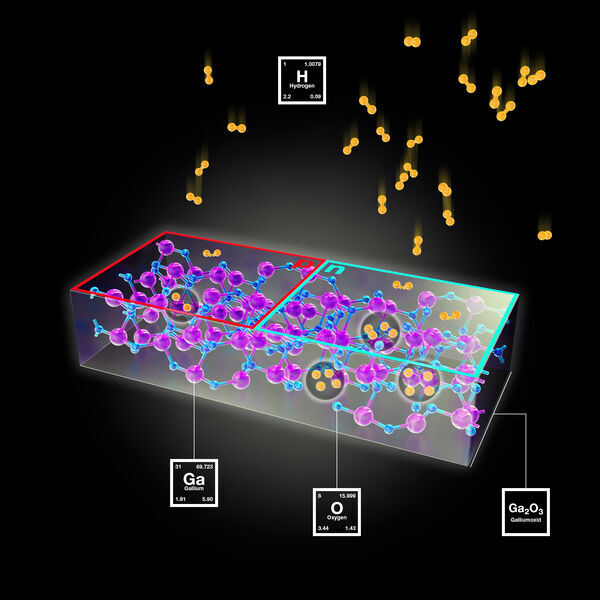
Bipolar doping
"New approach facilitates the control of reversible conductivity in semiconductors The semiconductor gallium oxide is thought to be a promising candidate for potential use in power electronics. So far, however, a number of obstacles have stood in its path, especially how to specifically influence the material’s electrical conductivity. In a study published in the journal Scientific Reports (DOI: 10.1038/s41598-020-62948-2), a team of researchers involving scientists from the Helmholtz Zentrum Dresden-Rossendorf (HZDR) have now demonstrated how the conductivity of gallium oxide in its most stable form (β-Ga2O3) can be regulated via the controlled incorporation of hydrogen in the semiconductor’s crystal lattice. For the team from Bowling Green (Ohio), Dresden, Berkeley and Los Alamos the starting point for their activities was one of the material’s particularly striking properties: the width of its band gap, which is a measure of the energetic distance between valence band and conduction band in a solid. In semiconductors at very low temperatures, it is only the valence band that initially exhibits load carriers: the material is non-conductive. By inputting energy, however, they can be transferred to the conduction band, enabling a flow of current." [...]
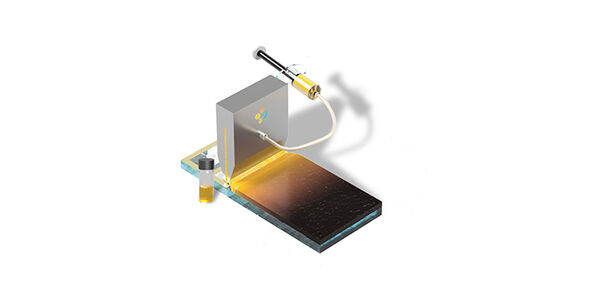
Solar perovskite production on a roll
"High-performance perovskite solar cells are made using a manufacturing-friendly liquid-based process suitable for roll to roll production. Advanced ink formulations could be the key to turning perovskite solar cells (PSCs) from heroes of academic labs into commercially successful products. Researchers at KAUST have developed a perovskite ink tailor-made for a mass manufacturing process called slot-die coating, producing PSCs that captured solar energy with high efficiency. The ink could also be coated onto silicon to create perovskite/silicon tandem solar cells that capture even more of the Sun’s energy. “PSCs have shown a lot of promise in lab-scale work over the past decade,” says Anand Subbiah, a postdoc in Stefaan De Wolf’s lab. “As a community, we need to start looking at the stability and scalability of PSC technology,” he says." [...]

Using sunlight to transform chemical manufacturing into ‘zero-waste’ industries
"Chemical engineers have successfully manipulated carbon nitride to use sunlight to synthesize fluorine-based molecules, which are key building blocks of pharmaceutical products in a breakthrough on the path to the ‘holy grail’ of zero waste industry manufacturing. Researchers from The University of Manchester have discovered that simple manipulations of carbon nitride, a metal-free, non-toxic solid, made of Earth abundant elements of carbon and nitrogen, are able to efficiently exploit solar light for the synthesis of organic molecules containing fluorine, which are the building blocks of many agro-chemical and pharmaceutical applications. The concept the scientists used is known as ‘photocatalysis’ whereby artificial light or sunlight is able to trigger chemical reactions at ambient conditions, which would otherwise require more energy intensive processes. The process can be compared to that of natural photosynthesis used by plants to harness the sun’s energy. However, artificial exploitation of light energy is very challenging as materials used for this purpose are generally very expensive, difficult to make and very often not efficient in triggering chemical reactions. This represents a major issue in terms of process viability on a large scale." [...]

PLATYPUS reveals new vulnerabilities discovered in Intel processors
"An international team of security researchers, including experts from the University of Birmingham, is presenting new side-channel attacks, which use fluctuations in software power consumption to access sensitive data on Intel CPUs. Power side-channel attacks are attacks that exploit fluctuations in power consumption to extract sensitive data such as cryptographic keys. Because power measurements by malware were previously very inaccurate, such attacks required physical access to the target device and special measurement tools such as an oscilloscope. The project, called PLATYPUS, is led by the Institute of Applied Information Processing and Communications at Graz University of Technology together with the University of Birmingham, UK and the Helmholtz Center for Information Security (CISPA), shows a method that allows power side-channel attacks that can access sensitive data with unprecedented accuracy – even without physical access. The team have demonstrated their method can affect devices including desktop PCs, laptops and cloud computing servers from Intel and AMD. Dr David Oswald, Senior Lecturer in Cyber Security at the University of Birmingham, says: “PLATYPUS attacks show that power side channels – which were previously only relevant to small embedded devices like payment cards – are a relevant threat to processors in our laptops and servers." [...]
Documentação
A documentação é parte essencial do processo de aprendizagem e a Internet além de artigos interessantes de explorar também tem alguma documentação em formato PDF interessante de ler. Todos os links aqui apresentados são para conteúdo disponibilizado livremente pelo editor do livro.

newelectronics 10 Novembro 2020
"New Electronics is a fortnightly magazine focusing on technological innovation, news and the latest developments in the electronics sector. Downloadable as a digital page turner or pdf file, or offered as a hard copy, the New Electronics magazine is available in a format to suit you. " [...]
Projetos Maker
Diversos Projetos interessantes.

Zoom Control Box
"Before the pandemic few of us had even heard of Zoom. Now it's a part of our daily lives for many of us. If you're just joining other people's meetings, it's easy. Surely, one of the reasons it's caught on. But another reason is that it's actually quite powerful. Once you start using it to the full for your own meetings you can share your screen, presentations, music and videos, and a whiteboard, and you can manage your participants." [...]
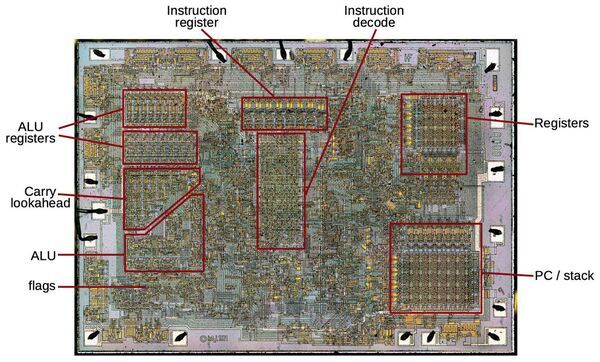
Reverse-engineering the carry-lookahead circuit in the Intel 8008 processor
"The 8008 was Intel's first 8-bit microprocessor, introduced in 1972. While primitive by today's standards, the 8008 is historically important because it essentially started the microprocessor revolution and is the ancestor of the modern x86 processor family. I've been studying the 8008's silicon die under the microscope and reverse-engineering its circuitry. The die photo below shows the main functional blocks1 including the registers, instruction decoder, and on-chip stack storage. The 8-bit arithmetic logic unit (ALU) is on the left. Above the ALU is the carry-lookahead generator, which improves performance by computing the carries for addition, before the addition takes place." [...]

Binary Calculator
"A binary calculator and binary clock in a handheld format using circuit sculpture building techniques. 328p, MCP7940 RTC, TLC5928 LED driver Technical Details: Atmega 328p processor TLC5928 Constant Current LED Driver MCP7940 RTC MCP73831T Li-Ion Charge Controller 5mm red LEDS (2x8) Maple base and body, cherry key caps. Mostly 0.81mm (0.032”) brass rod While surfing Hackaday, I noticed Mohit Bhoite’s circuit sculptures. They were complex and beautiful. I decided to try some circuit sculpture of my own. I wanted to create something that would be fun but not overly complex." [...]
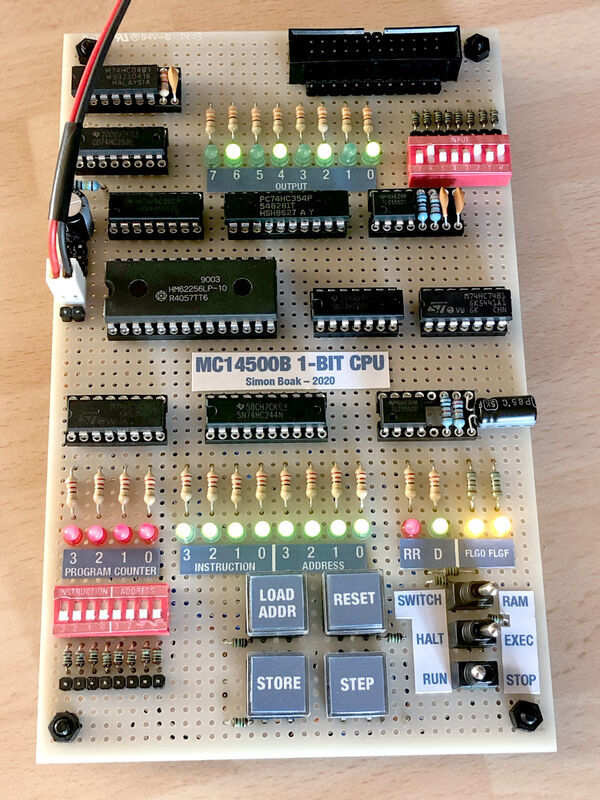
The World’s Least Powerful Computer? 1-bit Cpu With The Mc14500b Industrial Control Unit
"I came across this weird chip a few months ago. Designed by Motorola in the 70s, its purpose is to replace the “ladder logic” relays in industrial process control so all it needs to do is make simple decisions based on whether different inputs are logic high or low. It’s hard to find many references to this chip online, but I picked up some new-old stock from China (always risky) and mine are dated 2014 and made by ON Semi, which is what’s left of Motorola’s chip division. But it does contain enough of the basics to form the control logic a processor. It comes in the DIP16 form factor and is very simple to interface with. Instructions are 4 bits giving a total of 16 different instructions." [...]
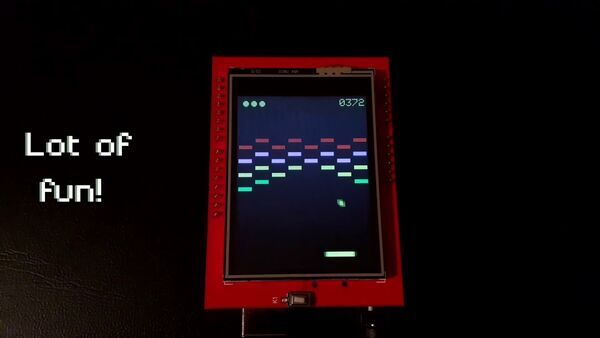
Arduino Touch Breakout Game
"Fully configurable multi level Arduino breakout game for touch screen. Story This a small version of the classic breakout video game for Arduino UNO and TFT LCD screen (240x320 pixel), driver ILI9341 with 8-bit parallel communication. The game This Breakout has multiple screens with different configurable rows and columns of bricks, up to eight rows, with each two rows a different color, that can be programmed on or off with different patterns. Using a single ball, using the touch panel the player must knock down as many bricks as possible by using the walls and/or the paddle below to ricochet the ball against the bricks and eliminate them. If the player's paddle misses the ball's rebound, they will lose a turn. " [...]
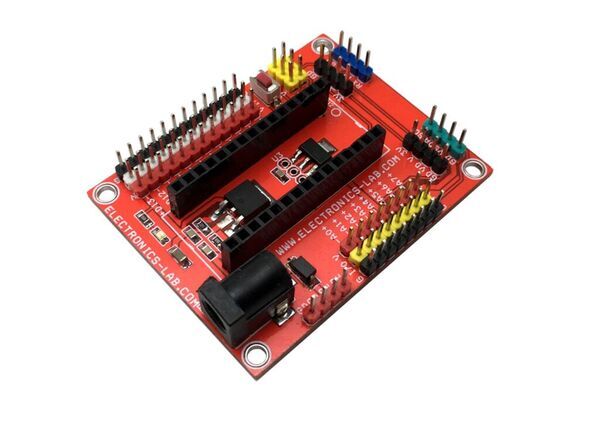
Expansion Shield – Breakout Board for Arduino Nano
"If you need to interface many devices and sensors to Arduino Nano, then, this project is for you. This is a Nano expansion I/O shield (breakout board) for the Arduino Nano. The board facilitates the easy connection between Arduino Nano and other devices. Each Arduino (I/O) Pin including the 5V DC and GND pins are available for easy connection to the sensors and other devices. The board enables the easy interface of many devices and sensors which includes various power voltage options. It provides several different options for power outputs and wide range of operating power supply input." [...]

A Blockchain-Powered Smart-Lock
"Securely open/close your front door with a smart contract Story Ever wondered why many consider blockchain to be a game-changer in the IoT space? This example describes how to build a very simple smart-lock powered by a Blockchain smart contract to make some considerations around this topic. The hardware We will use a very basic solenoid-based electric lock, that requires a dc 12V input to switch in the “open” state, while a mechanical spring will push it in “closed” state when not powered. A Raspberry Pi Zero is more than enough to run the small script that monitors the blockchain and it’s small enough to fit into an hypothetical SmartLock case of a decent size. Finally the 12V power supply to power the lock and a relay board to switch it on and off complete the hardware specs for this simple project. The blockchain We will use the IoTeX Blockchain for the smart contract infrastructure: it has some nice characteristics and features that are very desired in an IoT project, let's see some of them: It's extremely fast, with an amazing 5-second transaction confirmation time it's perfect for devices automation In features instant finality of transactions: once a transaction is confirmed in a block, the confirmation is 100% final (i.e." [...]

Connect the micro:bit to P5.js to Play Pong
"This tutorial relies on a laptop or device that runs chrome or chromium: A subset of the Web Bluetooth API is available in Chrome OS, Chrome for Android 6.0, Mac (Chrome 56) and Windows 10 (Chrome 70). This means that it is impossible to connect an iPhone f.e. using this Bluetooth protocol to the micro:bit, there might be a possibility that it works with the WebBLE app for iOS but I haven't tried it. on most Android devices it works when you install the chrome browser. It also needs to be run in a secure environment (meaning https:// ), so the p5 web editor is perfect for that. Check https://web.dev/bluetooth/ for the latest updates on the protocol." [...]

Plant Reminder Box
"PocketBeagle based device that displays and texts user about plant's sunlight and water levels Motivations As a new plant parent, I unfortunately often forget to water my plants, or incorrectly place my plants in spots with too little or too much sunlight. At times, I wished that there was some way my plant could let me know it needed water or more sun, which was my motivation for this project. To hopefully extend the life of my plants and perhaps yours, I created this plant reminder box that texts the plant owner if their plant needs water or needs a different amount of sunlight. Additionally, the box has a screen that displays the plant's sunlight and water levels, so that the plant owner can 'check in' on the plant visually. This way, there's really no excuse for me or you to not have a green thumb! " [...]
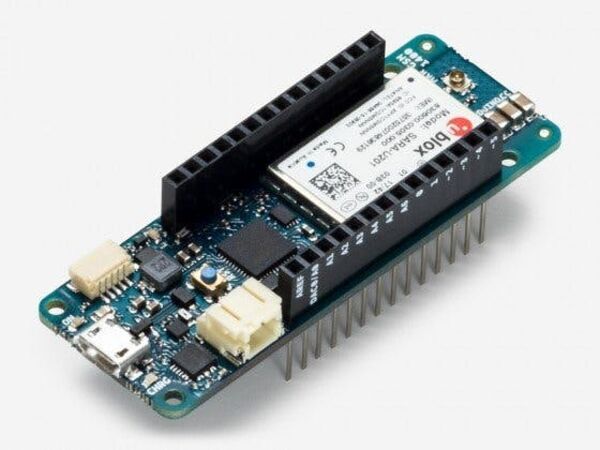
SCADA using Cellular IoT with MKR GSM 1400
"Applying IoT Technologies to revive an old SCADA Telemetry System I took up a challenge from an oil/gas client to revive a GSM based SCADA system that they had inherited, and to do so at very low cost. The existing RTUs at the remote sites used GPRS which is no longer available. 3G, however, is available at all sites. Fortunately, the existing RTUs have the ability to be programmed as Modbus RS485 slave devices. So the solution is to use the Arduino MKR 1400 to interface with the existing RTU devices and then have them connect to a cloud service and send MQTT updates. At the base, Node-Red will be used to connect to the cloud service and subscribe to the data points and expose them to the HMI which is a very old version of Wonderware Intouch." [...]

Top 3 Awesome Electronics Project Using D-882 Transistor
"Electronics Project Using D-882 Following these steps, you can make 3 awesome electronics project and circuit at home easily. You can use this circuit as like school project, college project. You also can use this circuit for your personal use.Supplies: To make this circuit, we might need some electronics component. Those component list have to been given below.Component List : Project No = 1 (Voltage Regulating Circuit Using D-882 Transistor) 1. Transistor - D 882 2. Volume - B 100 K 3." [...]

My not so stupid home
"Control and read light, temperature, humidity, feeder and water pump for cat with SD card, HTTP server on NodeMcu and Android client app. Summary I recently bought NodeMcu Lua ESP8266 controller and decided to start some home automation (or home management) project just to make my everyday life a little bit easier. To do that, I used relay for room light, DHT11 for temperature and sensor and 2 motors - DC water pump and Servo motor for cat's feeder. Software on NodeMcu was written in Arduino Studio - sketch have one Http server which receives requests from Http client ( in my case, I wrote an android app). Sketch also contains one UDP client which is used to get time from NTP servers. I used HTTP because it's simple and my schematic is not complexed - I just needed simple request-response communication." [...]

LED Sync to Music + LCD Display
"The LED sync to music audio amplifier system is a fun project to build in your spare time. Join me as we build this system following the steps below. Supplies:You can get all components at your local store in your region or you can buy online: Zaye Electronics 1. Unused 4 Litre lidded oil container/gallon. 2. 16x2 LCD unit x1 3." [...]

Music Player Using Arduino
"Arduino Music Player is a simple and fun Arduino project which can be build in 10-15 minutes. Once we have the hardware. The project is very simple. An Arduino audio player that plays .wav files. It consists of a speaker, a amplifier, and a micro-SD card adapter for a micro-SD card that holds the .wav files. Supplies:Parts List: Arduino Nano SD Card Module Speaker Arduino Library: Additionally we need and Arduino library, In Arduino IDE, go to Tools Manage Libraries, and search for TMRpcm and click on install." [...]

Rotary Cnc Bottle Plotter
"I picked up some rollers, which are probably used in the printer. I came up with the idea of turning them into the rotation axis of CNC bottle plotter. Today, I'd like to share how to build CNC bottle plotter from these rollers and other scraps. To do this project, I was inspired by lingib with his CNC Drum Plotter: https://www.instructables.com/CNC-Drum-Plotter/ Lets getting started. Supplies: 1pcs x Arduino Uno R3. 1pcs x Arduino CNC Shield V3 GRBL." [...]
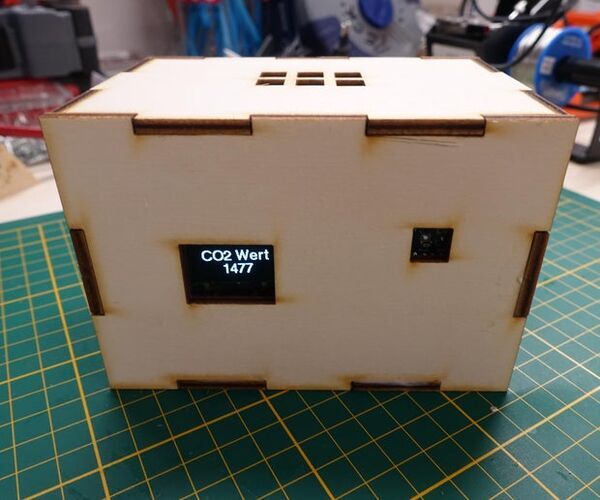
Plug & Play CO2 Sensor Display With NodeMCU/ESP8266 for Schools, Kindergardens or Your Home
"I am going to show you how to quickly build a plug & play CO2 sensor where all elements of the project will be connected with DuPont wires. There will only be 5 points that need to soldered, because I did not solder before this project at all. The sensor will have a display where the measured values will be shown every 5 seconds in a big enough Helvetica font. The housing will be made with a laser cutter out of 4mm simple plywood. All elements will be glued together. A premade container can be an alternative." [...]

Binary DVM
"Binary displays are very popular for clocks so it looked like there a gap waiting to be filled in the measurement area with an instrument that displayed its results in a Binary format. As result I decided that a DVM would be a suitable project to be given a Binary makeover. The Microbit has the means via an ADC (Analogue to Digital Converter), to convert analogue inputs into digital values. These digital values can then be used to create a myriad of applications. In this case I will describing how to make a Battery powered Digital Volt Meter (DVM), but in addition to this I will have the ability to display the voltage in Binary as well as the usual Decimal values. ** NOTE ** ENSURE THAT ANY VOLTAGE DIRECTLY APPLIED TO THE MICROBIT DOES NOT EXCEED THE SUPPLY RAIL (~3V), AS YOU WILL DAMAGE THE MICROBIT If you were to apply a DC input to the ADC this being limited by the supply would mean that ~3V would be the maximum." [...]

How to Make Analog Clock & Digital Clock With Led Strip Using Arduino
"Today we will make a Analog Clock & Digital clock with Led Strip and MAX7219 Dot module with Arduino. It will correct the time with the local time zone. The Analog clock can use a longer LED strip, so it can be hung on the wall to become a artwork, but the unit of LEDs needs to be a multiple of 60. GitHub (scheme and sketch): https://github.com/DKARDU/LEDclock Components The following parts were used in this project: Arduino Uno 4 in 1 Max7219 dot matrix led DS3231 clock Jumper wires Breadboard" [...]
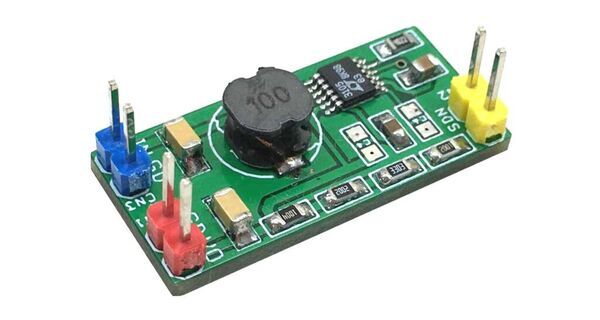
Photovoltaic Cell Battery Charger / Solar Cell Li-Ion Battery Trickle Charger with MPPC
"This is a tiny module that allows users to charge small Li-ion batteries, CR2032 or equivalent, from a low power source such as a small photovoltaic cell. The project consists of the LTC3105 step-up DC-DC converter chip which features Maximum Power Point Control (MPPC) and 250mV start-up voltage which enables operational directly from low power, high impedance alternative power sources such as photovoltaic cells. A user-programmable MPPC set point maximizes the energy that can be extracted from any power source. Burst Mode operation, with a proprietary self-adjusting peak current, optimizes converter efficiency and output voltage ripple overall operating conditions. The circuit works with single-cell or dual-cell in parallel. The operating supply of this project is as low as 225mV and a maximum of 5V." [...]

Arduino String Synthesizer
"The Eminent Solina is a famous string synthesizer from the 70’s. It is based on a paraphonic oscillator, a simple envelope and a phaser. The oscillators in the original was a divide down structure where you generate the frequencies for the top octave and divide those down by modulo 2 for the rest of the octaves. We can’t really use a signal for every key so we use an alogorithm for generating 8 Saw waves and distribute those among the keys played on the keyboard. Paraphonic means it’s kind of polyphonic but shares some parts of the soundpath. In this case it’s the envelope shared by all the keys played on the keyboard." [...]

SLAM with ROS Using Bittle and Raspberry Pi 4
"If you think the second robot in the picture doesn't look stable enough, you''ll be surprised. Main topic of this article is going to be SLAM and mapping with ROS. We’ll use Bittle, an agile quadruped robot from Petoi, that finished their Kickstarter campaign last month with huge success. First let’s start with some theory. What is SLAM? SLAM stands for Simultaneous Localization and Mapping - it a set of algorithms, that allows a computer to create a 2D or 3D map of space and determine it’s location in it." [...]
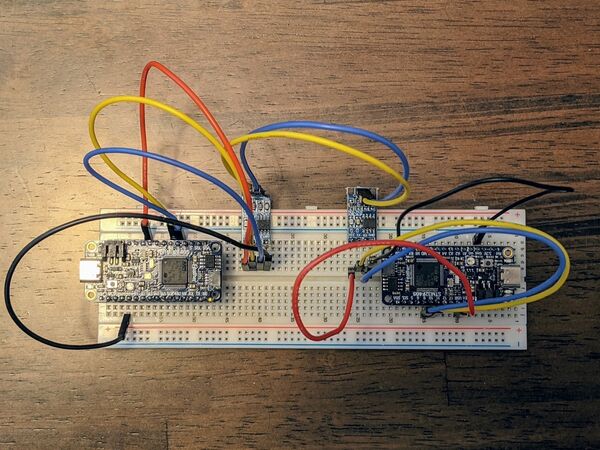
CAN Bus with CircuitPython: Using the canio module
"A Controller Area Network (CAN bus) is a robust vehicle bus standard designed to allow microcontrollers and devices to communicate with each other's applications without a host computer. In this guide you'll learn how to use CircuitPython's canio module to send and receive data between two supported boards, such as the Feather M4 CAN. " [...]
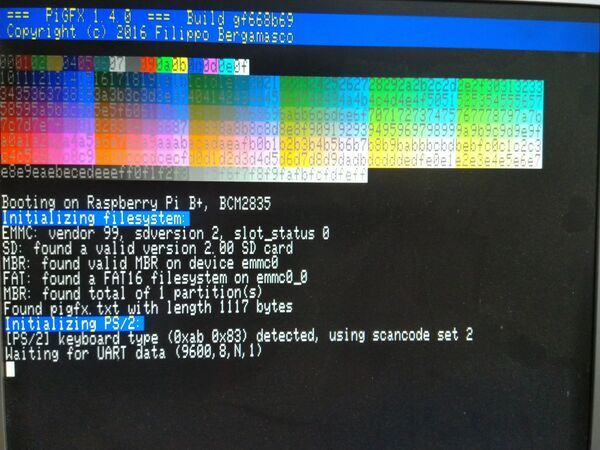
PiGFX - Raspberry Pi graphics card / ANSI terminal emulator
"PiGFX is a bare metal kernel for the Raspberry Pi that implements a basic ANSI terminal emulator with the additional support of some primitive graphics functions. It can be driven by pushing characters to the raspi UART. Additional functions like changing text color, moving the cursor or clear the screen can be invoked via ANSI escape codes. The result is that you can easily add an HDMI display output to your embedded project without the hassle of directly generate the video signal. This work is inspired by Spencer's project that aims to create a cheap graphics card and keyboard interface to its homebrew Z80 computer. PiGFX has the advantage of removing the fuss of having a full-featured Linux system running on your raspi." [...]
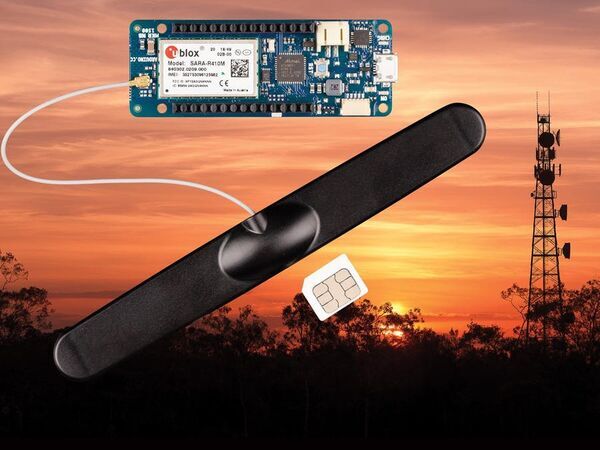
Arduino MKR NB 1500 Over the Telstra Narrowband Network
"We put the Arduino MKR NB 1500 to the test using the Telstra network and show you how to give your IoT project long range communication. Introduction There may be times where you need a project to monitor real-world conditions in a remote location and transmit that data to the end user wirelessly. It could be, for example, a series of remote pumping stations which are critical infrastructure for your property or operations. You may need to monitor the air quality for a buildup of gases in the pit, the flow rate to gauge the performance of the pump, and maybe the voltage of a backup battery. It could also be a remote weather station or access control system for the gates around your property. It’s not practical for yourself or an employee to constantly travel to each site to monitor the system." [...]
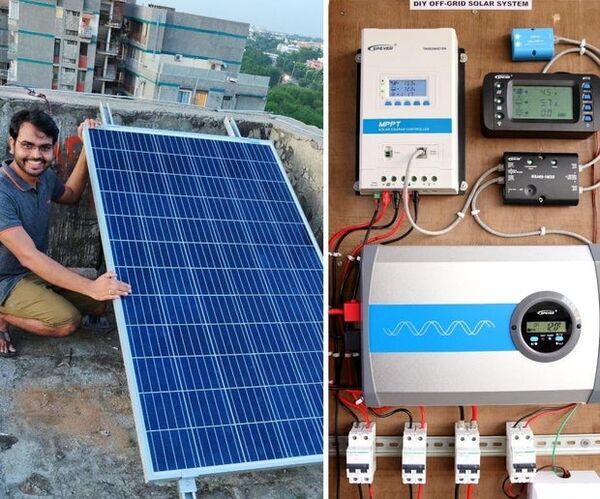
DIY Off-Grid Solar System V2.0
"The prices of solar panels have been falling gradually but the cost of an off-grid solar system setup is rising steadily. However, anyone with basic knowledge of Electricity and having a toolbox can install it on their own. This will reduce the overall system cost substantially and you will learn a lot. In order to build a basic off-grid solar system, you will need the following components: 1. Solar panel 2. Charge Controller 3." [...]
NeoPixel LED Ring Temperature Monitor
"In this tutorial we will learn how to display a temperature on a NeoPixel LED Ring from a DHT11 sensor using Arduino and Visuino software. Arduino Uno or any other Arduino board NeoPixel - RGB LED Ring DHT11 Temperature and Humidity Sensor Jumper wires" [...]
That's all Folks!



